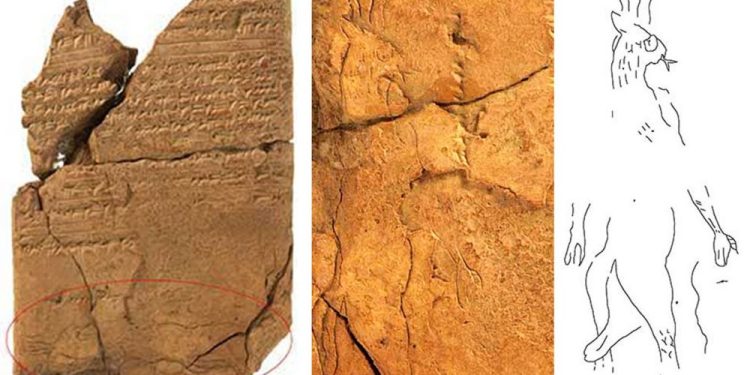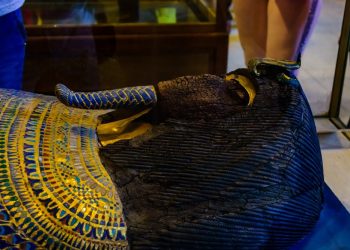Archeologists have discovered traces of an ancient, rare 2,700-year-old demon of epilepsy on a Mesopotamian tablet.
The mysterious being was discovered by a researcher studying ancient Assyrian tablets. The creature is believed to have been the demon responsible for “epilepsy in ancient times.
The tablet upon which the Mesopotamian demon was etched was used in ancient times to treat health conditions.
The discovery of the tablet and its contents will help experts better understand the mysterious connections between medicine and magic thousands of years ago.
The ancient creature was discovered by noted Assyriologist Troels Pank Arbøll of the University of Copenhagen.
The odd creature was discovered on the back of the tablet. The demon of epilepsy was depicted by the ancient Assyrians 2,700 years ago having large horns, a tail, and a snake-shaped tongue.
Analysis of the depictions later revealed that it was a representation of the demon that the ancient Assyrians believed was responsible for causing Bennu’s disease, which describes the typical symptoms of epilepsy. The mysterious creature depicted on the ancient Assyrian tablet is now regarded as the oldest illustration ever found of a demon that can be associated with epilepsy.
“We have known for a long time that the Assyrians and Babylonians regarded diseases as phenomena that were caused by gods, demons, or witchcraft. And healers were responsible for expelling these supernatural forces and the medical symptoms caused by drugs, rituals, or incantations. But this is the first time we have managed to connect one of the scarce illustrations of demons in the medical texts with the specific disease epilepsy, which the Assyrians and Babylonians called Bennu,” explains postdoc Troels Pank Arbøll.

He adds: “Drawings of supernatural powers are very rare on cuneiform tablets with magical and medical treatments. When there is a drawing, it usually depicts one of the figures that the healers used in their rituals, not the demon itself. But here we have a presentation of an epilepsy demon as the healer who wrote the text must have imagined it.
The disease, known as Bennu-epilepsy, was one of the most feared diseases in ancient Mesopotamia. The symptoms of the disease include seizures, loss of consciousness or sanity, and, in some cases, the patients screamed out like a goat.
“The text also states that the demon acted on behalf of the lunar god Sîn when it inflicted a person with epilepsy. So the Assyrians and Babylonians believed that there was a connection between the moon, epilepsy, and insanity,” revealed Troels Pank Arbøll.
“In the following millennia, this idea became widespread, also in our part of the world, and it can still be detected in the English word ‘lunacy.’ In other words, the views on illness, diagnoses, and treatments in the earliest civilizations have had a significant impact on later perceptions of illness, even in recent history, “he added.
Join the discussion and participate in awesome giveaways in our mobile Telegram group. Join Curiosmos on Telegram Today. t.me/Curiosmos











